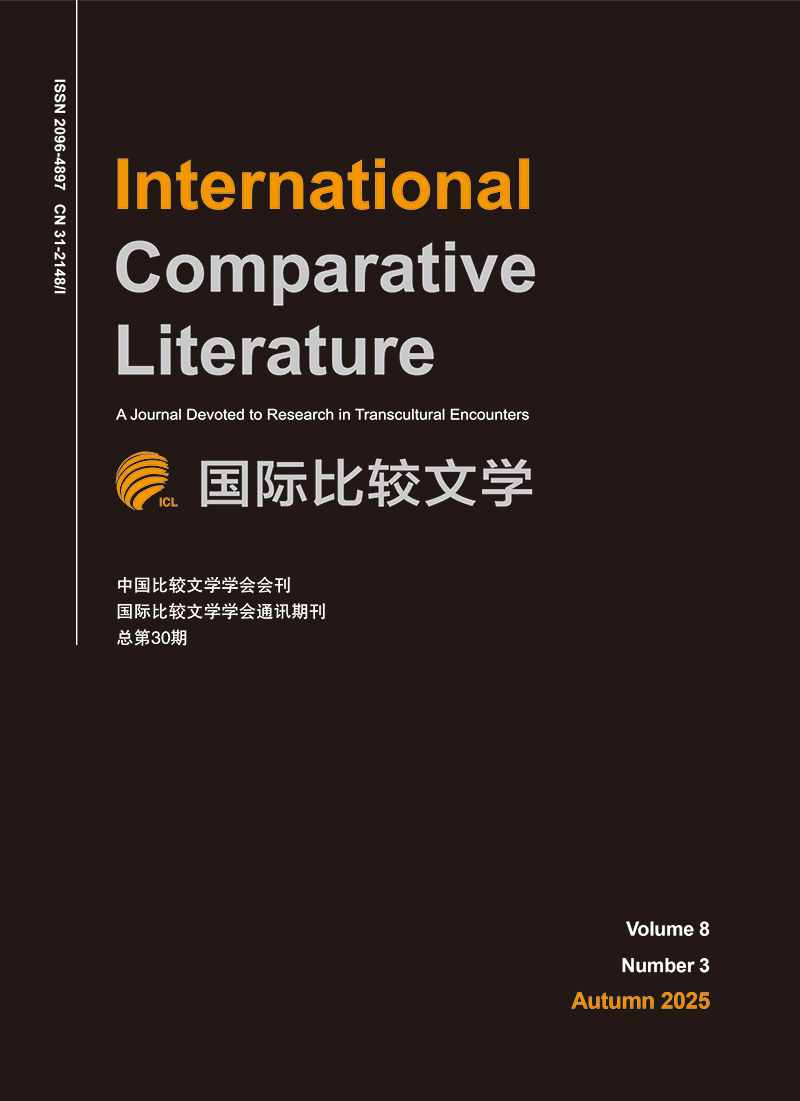|
[1]
|
Ames, Roger T., and David L. Hall. Focusing the Familiar: A Translation and Philosophical Interpretation of the
|
|
[2]
|
Zhongyong. Honolulu: University of Hawai’i Press, 2001.
|
|
[3]
|
Bashô, Matsuo.“Frog.” In Western Literature in a World Context: The Enlightenment through the Present. Vol. 2. Edited
|
|
[4]
|
by Paul Davis et al. New York: St. Martin, 1995.
|
|
[5]
|
CHEN Shudong. Comparative Literature in the Light of Chinese Prosody. Lanham, MD: Lexington Books, 2018.
|
|
[6]
|
——.“Serendipity: Seizing the Toned Picture of Poetry in the Light of Prosody.” International Comparative Literature
|
|
[7]
|
1, no. 2 (2018): 184-96.
|
|
[8]
|
——.“Dao of Emily Dickinson: Placing of Poetry and Philosophy across Boundaries.” In International Communication
|
|
[9]
|
of Chinese Culture. New York: Springer Publishing Company, 2017, 2.
|
|
[10]
|
FENG Shengli. Prosodic Morphology of Mandarin Chinese. London: Routledge, 2017.
|
|
[11]
|
James, William. Essays in Radical Empiricism. Lincoln: University of Nebraska Press, 1996.
|
|
[12]
|
Johnson, Ian, and WANG Ping. Daxue and Zhongyong: Bilingual Edition. Hong Kong: The Chinese University of Hong
|
|
[13]
|
Kong Press, 2012.
|
|
[14]
|
Kunst, Richard Alan.“The Original Yijing: Texts, Phonetic Transcription, Translation, and Index, with Samples Glosses.”
|
|
[15]
|
PhD diss., University of California, Berkeley, 1985. ProQuest (AAT 8525020).
|
|
[16]
|
Wang, Robin. Yinyang: The Way of Heaven and Earth in Chinese Thought and Culture. Cambridge: Cambridge University
|
|
[17]
|
Press, 2012.
|
|
[18]
|
Wittgenstein, Ludwig. Tractatus Logico-Philosophicus. Translated by D. F. Pears and B. F. McGuinness. Introduced by
|
|
[19]
|
Bertrand Russell. London: Routledge & Kegan Paul, 1961.
|
|
[20]
|
——. Philosophical Investigations. 3rd ed. Translated by G. E. M. Anscombe. New York: Macmillan, 1968.
|
|
[21]
|
XIAO Tong. Wen Xuan (Selections of Refined Literature). Translated by David Knechtges. Princeton, NJ: Princeton
|
|
[22]
|
University Press, 1987.
|
|
[23]
|
陈曙东:《中国古典诗文的韵律学解读》,《清华学报》 2012年9月第42卷第3期,第379—400页。[CHEN Shudong.
|
|
[24]
|
“Zhongguo gudian shiwen de yunlüxue jiedu” (Reading Prosodically, Reading Serendipitously: Fine-Tuning for the
|
|
[25]
|
Unheard Melodies of Dao). Qinghua xuebao (The Tsing Hua Journal of Chinese Studies[New Series]) 42, no. 3
|
|
[26]
|
(September 2012): 379–400.]
|
|
[27]
|
冯胜利:《汉语韵律语法问答》,北京:北京语言大学出版社, 2016年。
|
|
[28]
|
[FENG Shengli. Hanyu yunlü yufa wenda (Q & A: A Prosodic Grammar of Chinese). Beijing: The Beijing Language and
|
|
[29]
|
Culture University Press, 2016.]
|
|
[30]
|
(清)刘大櫆:《论文偶记》,百度百科, https://baike.baidu.com/item/%E8%AE%BA%E6%96%87%E5%81%B6%E8%AE%B0, 2019年检索。
|
|
[31]
|
[LIU Dakui.“Lunwen Ouji” (Essay of Occasion). Online ed. https://baike.baidu.com/item/%E8%AE%BA%E6%96%87%E5%81%B6%E8%AE%B0[2019].]
|
|
[32]
|
陆宗达:《训诂简论》,北京:北京出版社, 1983年。
|
|
[33]
|
[LU Zongda. Xungu jianlun (A Brief Discussion of Exegesis). Beijing: Beijing Chubanshe, 1983.]
|
|
[34]
|
(宋)欧阳修:《相州昼锦堂记》,见(清)吴楚材、吴调侯主编:《古文观止》,北京:中华书局, 1963年。
|
|
[35]
|
[OUYANG Xiu.“Xiangzhou Zhoujin Tang ji” (On Xiangzhou Zhou Jin Hall). In Guwen guanzhi (Perfected Admiration of
|
|
[36]
|
Ancient Literature). Edited by WU Chucai and WU Tiaohou. Beijing: Zhonghua Book Company, 1963.]
|
|
[37]
|
(汉)司马迁:《韩信列传》,见《史记》,北京:中华书局, 1959年。
|
|
[38]
|
[SIMA Qian.“Han Xin Lie Zhuan” (Biography of Han Xin). In Shiji (Records of the Historian). Beijing: Zhonghua Book
|
|
[39]
|
Company, 1959.]
|
|
[40]
|
朱光潜:《朱光潜美学文集》第1—2册,上海:上海文艺出版社, 1982年。
|
|
[41]
|
[ZHU Guangqian. Zhu Guangqian meixue wenji (Collected Aesthetics Essays of Zhu Guangqian). Vol. 1 and Vol. 2.
|
|
[42]
|
Shanghai: Shanghai Literature and Art Press, 1982.]
|

 点击查看大图
点击查看大图



 下载:
下载:

